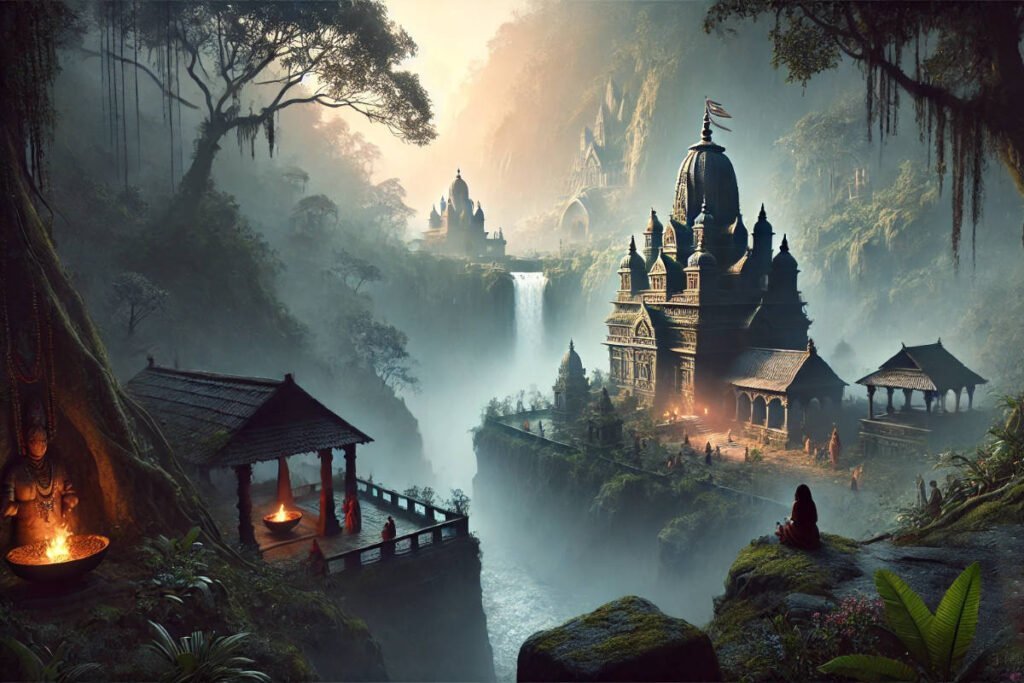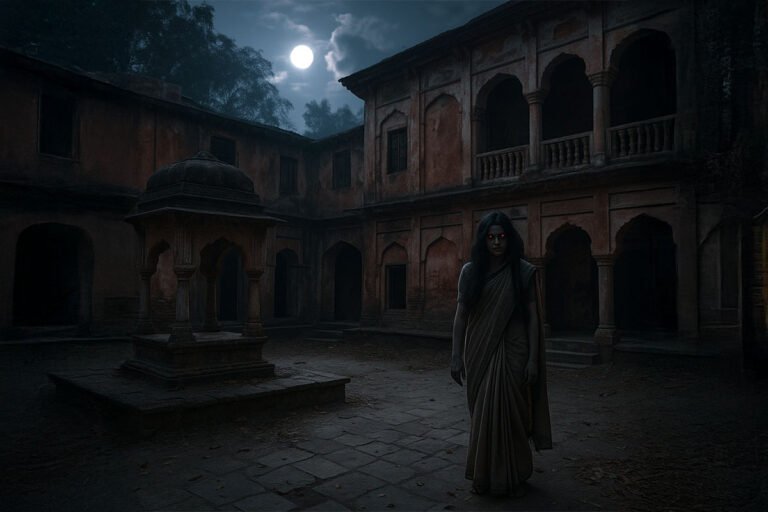High atop the Nilachal Hill in Assam stands the sacred Kamakhya Temple, one of India’s most revered Shakti Peethas. The temple’s origins are steeped in mythology and divine sacrifice, creating a legacy of mystical power that still draws pilgrims from all over the world. But behind the temple’s towering walls and elaborate rituals lies a story filled with love, loss, and cosmic forces.
The legend begins with the eternal union of Lord Shiva and Goddess Sati. Sati, the daughter of King Daksha, was deeply devoted to Shiva, the ascetic and powerful god who lived on Mount Kailash. Though Daksha disapproved of his daughter’s choice of husband, considering Shiva unworthy of her, Sati’s love for Shiva was unwavering.
In defiance of her father’s wishes, Sati married Shiva, further deepening the rift between her and Daksha. Insulted by this act, Daksha sought to humiliate his divine son-in-law and organized a grand sacrificial ceremony, or Yagna, to which all the gods and celestial beings were invited except Shiva. Despite the deliberate exclusion, Sati decided to attend, hoping to reconcile with her father. However, when she arrived, she was met with scorn, and Daksha insulted Shiva in front of the assembly.
Unable to bear the humiliation of her beloved husband, Sati’s grief and anger consumed her. In a fit of despair, she threw herself into the sacrificial fire, vowing never to return to her father’s house. Sati’s death shook the cosmos. Lord Shiva, upon learning of his wife’s death, was overwhelmed with fury. In his rage, he performed the Tandava, the dance of destruction, and lifted Sati’s lifeless body onto his shoulders, wandering the universe in grief.
To save the world from destruction and to bring Shiva out of his sorrow, Lord Vishnu intervened. Using his Sudarshana Chakra, Vishnu severed Sati’s body into 51 pieces, which fell to Earth and became the sacred Shakti Peethas, places of immense spiritual power. Each site is believed to be where a part of Sati’s body landed, and it is at these locations that the divine feminine energy is most potent.
It is said that at Kamakhya, one of the most important Shakti Peethas, the yoni (reproductive organ) of Sati fell. This sacred spot became a powerful symbol of creation and fertility, and it is from here that the Kamakhya Temple draws its spiritual significance. Unlike other temples dedicated to gods and goddesses, Kamakhya is uniquely tied to the concept of divine feminine power in its most raw and primal form.
The temple itself is unlike any other in India. It is a site of deep mysticism and tantric practices, where devotees seek the blessings of Goddess Kamakhya for fertility, protection, and spiritual awakening. The temple does not house an idol of the goddess, instead, the focus of worship is a natural spring, which flows through a crevice in the rock, symbolizing the goddess’s womb. This sacred spring is believed to have potent powers, and during the annual Ambubachi Mela, it is said that the goddess herself undergoes her menstrual cycle, causing the spring to turn red.
The Ambubachi Mela, held in June, is one of the most significant and mystical festivals at Kamakhya. During this time, the temple remains closed for three days, symbolizing the goddess’s period of rest and rejuvenation. Devotees and tantric practitioners from across India gather at Kamakhya to honor the goddess’s powers of fertility and creation. The temple reopens on the fourth day, and the devotees are allowed to enter and seek her blessings. It is believed that those who visit Kamakhya during this time are blessed with spiritual cleansing and heightened mystical energy.
The temple is also a center for Tantric worship, a form of Hinduism that embraces the duality of life – creation and destruction, love and death. Tantric rituals performed at Kamakhya are considered highly powerful, invoking both the light and shadow aspects of the goddess. Kamakhya is viewed not only as a motherly figure of nurturing love but also as a fierce protector, capable of unleashing immense power against evil forces.
For centuries, Kamakhya has been a place of pilgrimage for those seeking fertility, prosperity, and divine protection. The legend of the goddess’s yoni falling here has cemented Kamakhya’s reputation as the seat of feminine energy, where the divine and the earthly converge.
The hilltop temple, surrounded by dense forests and shrouded in mist, evokes an air of mystery. The stone carvings of lions, elephants, and gods that adorn the temple seem to come alive in the early morning fog, as if guarding the goddess’s sacred abode. Within the sanctum sanctorum, the spring flows quietly, and the soft chanting of mantras fills the air as pilgrims offer flowers, incense, and red garments to the goddess.
But Kamakhya is more than just a temple, it is a symbol of the enduring connection between the divine feminine and the natural world. Here, amidst the ancient stones and flowing water, one can feel the presence of the goddess herself, both nurturing and powerful, an eternal force of creation and destruction.
The legend of Kamakhya, born from Sati’s sacrifice, continues to inspire awe and reverence, reminding all who visit that the power of the divine feminine is eternal, transcending life, death, and even time itself. As long as the waters of Kamakhya flow, the goddess will remain, offering her blessings to those who seek her grace.








